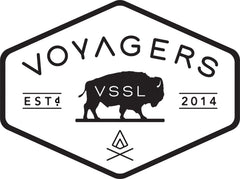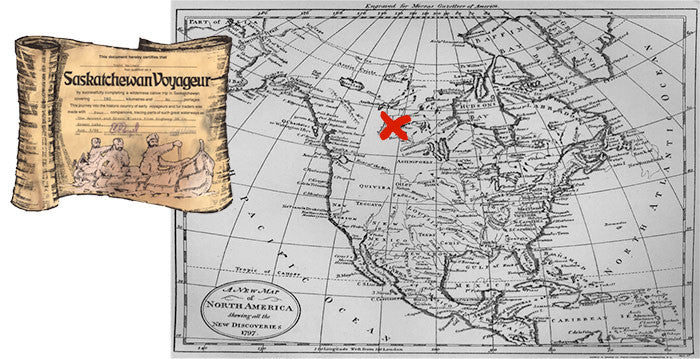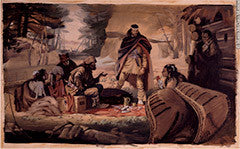Voyagers
 |
 |
 |
 |
 |
 |
 |
 |

Voyagers are our brand representatives. They are a diverse group of rad people that get off the beaten path, do unique things, and have a deep respect for the land, people, culture and traditions of the places they explore.
Our Voyagers are modern vagabonds, overlanders, hikers, travelers, and adventurers, and it’s their journeys that encourage other people to get out and blaze their own trails.
A beautifully rugged Canadian province with a strange name, a brief history lesson and why we are Voyagers.
VSSL’s founder was part of a trip that retraced a historic canoe route across Canada’s Northern Saskatchewan that was used by early fur traders. For this, each member of the crew was awarded an honorary “Voyageur” certificate from the provincial Minister of Parks and Renewable Resources.

Voyageur is the French word for “traveler” and the name given to the first fur traders that navigated the waterways of North America. These men were local legends who braved harsh environments and forged the networks that would eventually be developed into railways and roads, the backbone of two great countries; USA and Canada.
 Along their routes, the Voyageurs lived alongside First Nations people and adopted many of their traditions and cultures. They were story tellers and guides, the link between coasts and the best source of information on passageways, wilderness methodologies, new gear and newly explored lands.
Along their routes, the Voyageurs lived alongside First Nations people and adopted many of their traditions and cultures. They were story tellers and guides, the link between coasts and the best source of information on passageways, wilderness methodologies, new gear and newly explored lands.
VSSL was created to equip modern voyagers.
@vssl
#gearedforlife #beprepared

VOYAGER BISON?
There’s something incredibly iconic about the bison that we wanted to incorporate into our identity. They are majestic and resilient. They can thrive in the harsh cold of Alaska or in the scorching heat of the great western plains.

Their return from near extinction reflects on our ability to improve our own condition as individuals and as a species. They are nomadic, social creatures and were an invaluable resource to First Nations people and early explorers.
The bison provided many aspects of the required resources for many First Nations tribes:
* MEAT - roasted on the campfire, boiled, for pemmican and jerky, sausages
hides with the hair left on - winter clothing, gloves, blankets, robes, costumes for ceremonies or for hunting.
* HIDES - ropes, blankets, shields, clothing, moccasins, bags, tipi covers, bull boats, sweat lodge covers, containers, drums, winter counts
* SINUE (MUSCLES) - bowstrings, thread for sewing, webbing for snowshoes, attaching arrowheads
* BONES - for making hoes, shovels, runners for sleds, pointy tools, knives, pipes, scrapers, arrowheads
* HORNS - spoons, cups, bowls, containers to carry, medicine or gunpowder, headdresses, arrow points
* HAIR - rope, pillow stuffing, yarn, shields, medicine balls
* TAILS - fly swatter, whip, tipi decoration
* BRAIN - used for preparing the hides (to soften the skin)
* HOOFS - rattles, boiled to make glue
* TALLOW (FAT) paint base, hair grease, for making candles and soap, used for making pemmican
* TEETH - for decorating, necklaces
* STOMACH - containers for water and for cooking
* INTESTINES - storage containers, used for making sausage
* BLADDER - medicine bag, water container, pouches
* SKULL - ceremonies and prayer
In addition to being amazingly useful resources, today we know that bison are an incredibly important part of the ecosystem; their roaming and foraging assists in the rehabilitation of indispensable grasslands. We wanted to show our respect for this great animal by incorporating its image into the visual representation of our Voyager program.
